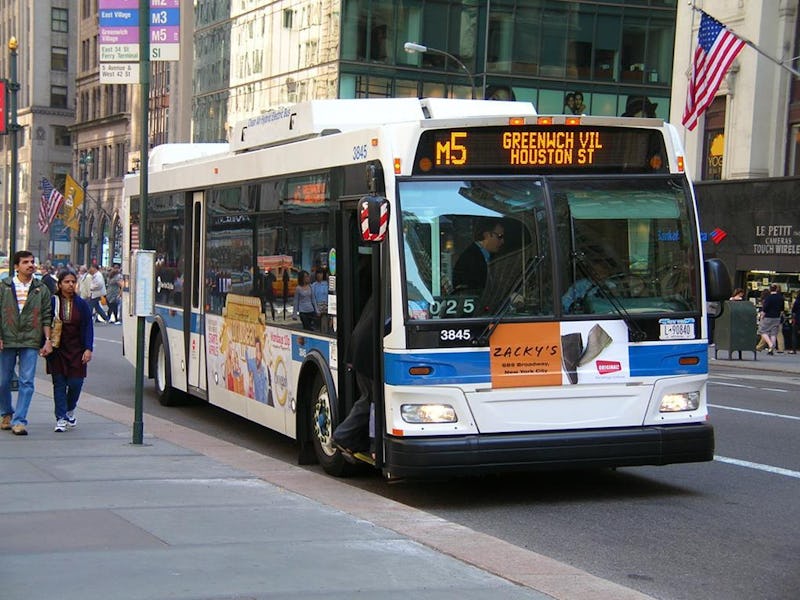It's 2015 and New York Is Only Now Getting Bus Stop Countdown Clocks
Sometimes the future takes longer than the cross-town at rush hour.

Bus countdown clocks are springing up for public transportation systems around the world. London has ‘em. Boston, too. Even San Francisco — which lays claim to an exceptionally lousy bus network — has them. And finally, New York City’s Department of Transportation is beginning to implement them as well. It has slowly gotten around to installing them in just three places, but is getting around (maybe?) to placing them at the 100 more stops.
New York City boasts the largest bus network in the U.S. — with a daily ridership averaging 2.2 million. This is not even 2015 tech we’re asking for here — no hoverbikes or teleportation hubs or anything. We just want to know how long the M63 is going to take while we’re standing outside shivering in the dark. What took so long?
It’s not that MTA has been against this countdown clocks — but the agency has made a string of bad investments for a couple of decades now, and seem to be finally correcting its errors.
Back in 1996, the MTA awarded a contract to Orbital Sciences Corp to design and install a bus-tracking system, to give riders a heads up about when they could expect their ride to finally arrive at their stop. The agency fired the company four years later.
In 2005, the MTA awarded another contract to Siemens to develop countdown clocks along six Manhattan bus routes. After the program fell behind schedule and the clocks proved unable to accurately predict times, the whole system was nixed. It didn’t help that it was going to cost more than $100 million to install clocks on every stop.
Then, in 2010, MTA launched a pilot countdown clock program on the M34 crosstown route, which was actually very successful. But it failed to expand after the technology company that created the clocks pulled out.
So two years later, the MTA decided to invest in a new program called BusTime, where riders use a mobile app or send and receive texts that would notify them where the bus they’re looking for is and how far away it is from their stop. And it helped that BusTime was estimated to cost only half as much as the Siemens program.
Unfortunately, BusTime fails to provide arrival times in minutes. Riders have to guesstimate the time based on distance information. Not to mention senior citizens and low-income residents — you know, a lot of the people who rely on buses to get around — don’t often use cell phones or know how to navigate new technologies.
So the MTA seems to be finally acknowledging that yeah, countdown clocks would be pretty fucking useful for riders. The new clocks collect data from GPS technology already installed in city buses, so getting them up and running would not be the expensive overhaul many had originally feared.
NYC buses will still run slow and late, but at least you’ll have an accurate sense of how long you’ll need to wait, before deciding to call the day off and return home to Netflix.